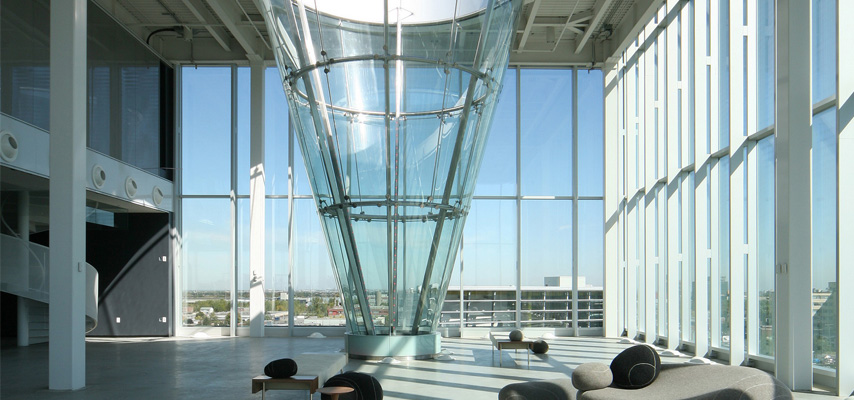Machine Bent Glass : Most commonly in the bending and tempering process, the glass is first heated to over 630 °C. Once heated, the glass is then bent to its target radius in the bending station.
Although bending systems most commonly produce cylindrical forms, it’s not uncommon to produce small bi-directional bending by angling the glass during the process.
The glass can be twisted into the direction in which the glass flows, which is known as lengthwise bending. It can also be bent crosswise across the glass flow, which is called crosswise bending.
As quality is always a key consideration, lengthwise bending provides a better quality result in terms of optical quality.
FACT: Bent and tempered glass offers excellent mechanical strength and durability against temperature variations. The maximum bending angle is usually ¼ of a circle.
Manual Bent Glass: Typical applications for curved glass are e.g. showroom facades and railway station canopies. The traditional manufacturing process for curved glass requires high operating temperatures: flat glass is heated beyond the weakening point and gradually curved in a heavy forming 124 mould.
After cooling down, the resulting glass element can maintain its new form without the need of extra boundary conditions. Disadvantages of this technique are the costs due to molding, high energy consumption, a risk of optical distortions, impracticable transportation of the worked piece, and long delivery times (especially in case of later replacement). For this reason, valuable alternative techniques have been developed, which do not need treatments at elevated temperatures and which are therefore called “cold bending processes”.
These processes imply the on-site bending of toughened float glass laminates and their fixation to a curved frame. Several cold glass bending systems are already available on the market. In this contribution, two aspects are closely examined.
The first aspect focuses on the mechanical behavior of laminated glass panels and more precisely on the time dependent loading deformation interaction during the bending process. The second aspect investigates the stress relaxation in the laminated glass due to the visco-elastic behavior of the interlayer once it has been bent.


